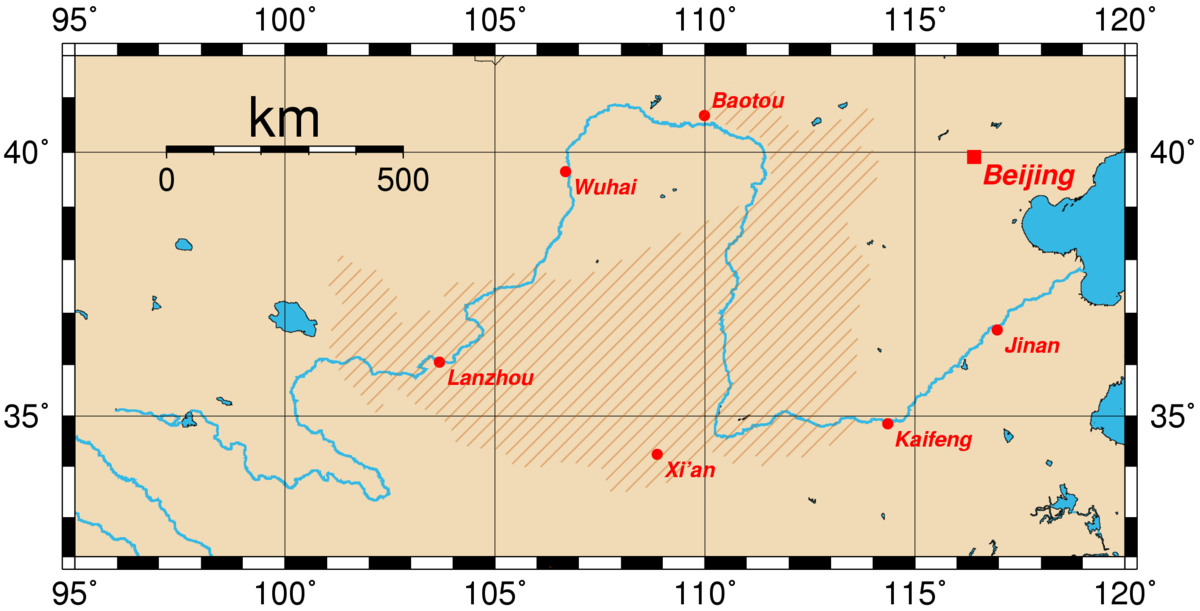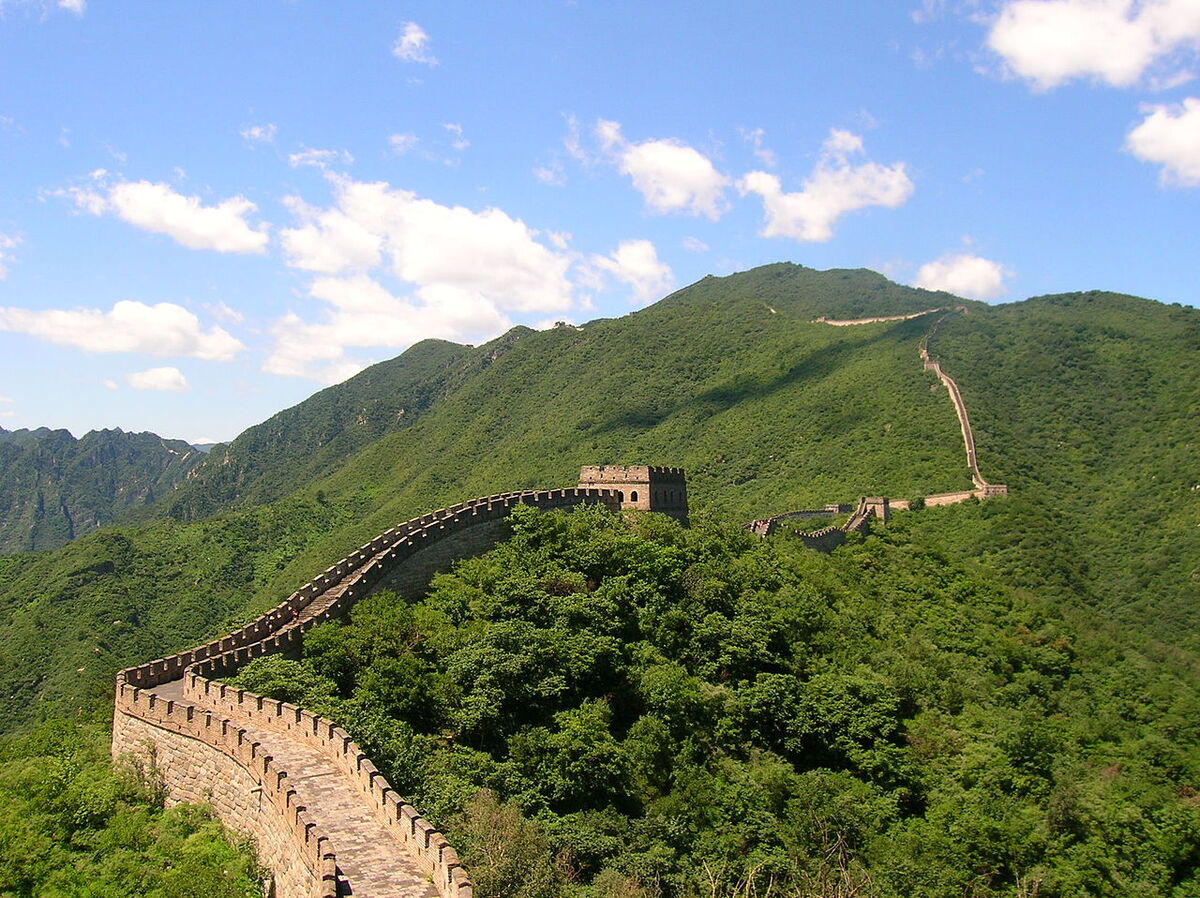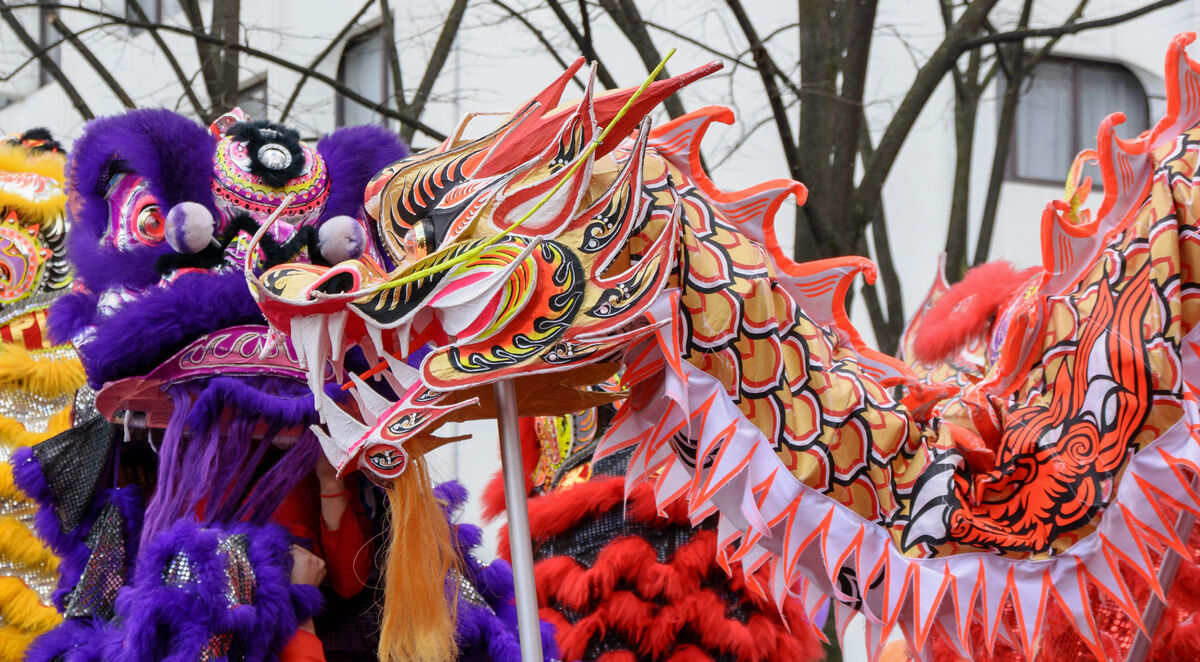The concepts covered in this factsheet go beyond those seen in secondary school. It is intended as a supplement for those who are curious to find out more.
Today's Chinese civilisation dates back 4,000 years, making it the oldest civilisation in the history of mankind. At that time, numerous farming villages had already been established along the Yellow River, the great river that crosses present-day China from west to east. These villagers lived by gathering, fishing and hunting, and are the ancestors of today's Chinese.

Yellow river map
The term civilisation refers to any evolving society. It is by measuring its technical, political and intellectual progress that a society can be described as civilised. Historians are even more precise: they describe a society as civilised if it has the following characteristics:
- at least several thousand inhabitants within a city
- the presence of some form of writing
- large centres where ceremonies (religious or otherwise) were performed.
Chinese civilisation began, of course, on the territory of present-day China, but in the past it encompassed a group of countries and cultures that have succeeded each other in East Asia over the last 4,000 years. It developed and invented many objects and processes that were then exported all over the world. It is a civilisation rich in ideas and know-how that has contributed to the evolution of many societies. Here are a few examples of inventions from the Chinese civilisation (or Huang He civilisation):
- calligraphy (Chinese civilisation is responsible for the art of forming letters correctly. It was the first to use a brush, black ink and absorbent paper);
- printing (China invented the act of printing characters long before the West);
- paper;
- Gunpowder (black powder);
- the kite;
- the compass;
- matches;
- porcelain.
The history of this unique civilisation is characterised by numerous wars and periods of peace, changes in the layout of Chinese territory, and the division and reunification of groups of people under the reign of various kings known as emperors.
An emperor is the ruler of an empire. In other words, he is an all-powerful king.
In the Huang He civilisation, the emperor was known as tianzi (Son of Heaven). The people believed that his power came directly from the heavens. Since then, several emperors have succeeded one another, and several empires have come into being, only to be replaced by others. This succession of emperors is known as a dynasty. Indeed, when an emperor died, it was often his son, cousin or nephew who took the throne. There have been several dynasties since the beginning of Chinese civilisation.
A dynasty is a succession of sovereigns from the same family.
The oldest known Chinese dynasty is the Xia dynasty, founded by the Yellow Emperor around 2000 BC. It coincides with the beginning of metallurgy: the use of bronze by Chinese civilisation to make weapons, cutlery, etc.
Later came the Shang dynasty (around 1600 BC). It was located in the valley of the Yellow River. The Shang truly modernised Chinese civilisation: this dynasty developed writing; it built great palaces (palace cities); it developed the art of metallurgy and made bronze tools and crockery, etc. The Zhou dynasty (1100 BC) was the first to decentralise its power, entrusting the administration of certain regions to selected families linked to the royal family.
Around 220 BC, the Qin dynasty appeared and took power over the whole of China. It was this dynasty that built the Great Wall of China, over 6,000 km long, to prevent invasion by the barbarians and Mongol nomads from the north. Several other empires followed (Han, Jin, Sui, Tang, Song, etc.) until the beginning of the 20th century.

Image of the Great Wall of China
The region's first farming communities settled millennia ago along the Yellow River and the seashore. They grew rice and wheat, and caught a wide variety of fish.
The history of Chinese civilisation is one of unification and warfare between different communities in the country. In order to pacify all the regions, they had to be grouped together and adopt a common language. But this was only achieved after a long process, during which much blood was shed.
Historically, when a tribal chief took control of most regions, the peasants believed that he had received a ‘mandate from heaven’, the celestial power to control all the tribes and decide the future of society. This tribal chief could then form a new dynasty, i.e. a succession of kings from the same family (father, son, cousins, etc.). The king was called ‘tianzi’ (son of Heaven).
Chinese dynasties:
The Mongol Yuan dynasty (1271 to 1368) organised a system of roads throughout China, facilitating trade between regions.
The Ming dynasty (1368 to 1644) encouraged trade with India (spices), Africa and Indonesia.
Modern China is going through an incredible economic and technological boom, thanks in part to the accelerated development of international trade, the availability of an abundant and cheap labour force (China has over a billion inhabitants) and a policy that favours exports over imports. It is also culturally rich, with diverse, creative and self-taught communities spread throughout the country, and more than 200 languages spoken, although the vast majority of Chinese people speak Mandarin or Cantonese.
For centuries, China has been one of the world's most avant-garde (advanced) civilisations. Today, China (or the ‘Middle Kingdom’) is considered to be the oldest civilisation still in existence, with 4,000 years of history.
China has been home to several major movements of thought that are still followed today by millions of followers. Here are just a few of them:
This philosophy of life is the oldest in China (500 BC). It originated with Confucius (born 551 BC). The disciples transcribed the conversations of their master philosopher shortly after his death. Confucianism is considered a philosophy of life rather than a religion, since it does not refer to a superior or divine power to whom we owe respect and obedience. This moral philosophy was the most widely followed in China, along with Buddhism and Taoism. Above all, Confucianism advocates social justice, tolerance, peace and respect for traditions.
The spiritual leader of this movement is Buddha. He lived in the5th century B.C. This school of thought can be associated with a philosophy (like Confucianism), but also with a religion, because it predicts that a life after death will deliver humans from this world of suffering. This life (Nirvana) can be attained through positive actions and by avoiding wrongdoing. In addition, human beings obey the law of ‘Karmas’, i.e. the faults or merits that an individual accumulates over the course of his or her reincarnations.
Taoism is a system of religious thought created by Laozi (born around 600 BC) that advocates modesty and human obedience to the natural order of the universe. This religion places the individual, his conscience and his spirituality at the centre of its principles. Life and wisdom are intimately linked to the cycles of nature. Later, Taoism would incorporate the principle of yin and yang: a conception and explanation of all natural phenomena. Yin represents feminine energy, passivity and darkness. Yang represents solar energy, light and male force.
Pottery first appeared in China over 6,000 years ago. The earliest pottery was often reddish in colour, as a result of the firing method used at the time. The various dynasties brought changes and improvements to the pottery-making process, resulting in more elegant, stronger pottery.
Numerous objects were created as a result: bowls, pots, vases and containers. These objects had a very practical role, as they met real needs, but they were also very aesthetic. The Chinese often drew inspiration from nature (vegetation, animals) when producing pottery.
The terracotta army in the mausoleum of the Qin emperor (259-210 BC) is an exceptional achievement: made from terracotta, it is made up of more than 8,000 statues of soldiers, chariots and horses. It was built to accompany the emperor in his death, so that he would not be alone.

A small part of the terracotta army
The dragon is a very important symbol for Chinese civilisation. It is often found in legends and myths, including those relating to the founding of civilisation. Dragons have also been used by every Chinese dynasty. Indeed, Chinese emperors were called ‘sons of the dragon’. Their clothes and palaces were adorned with dragons.

The dragon, a mythical animal
The dragon is a very positive symbol, being associated with the vegetal cycle, immortality, success and strength.